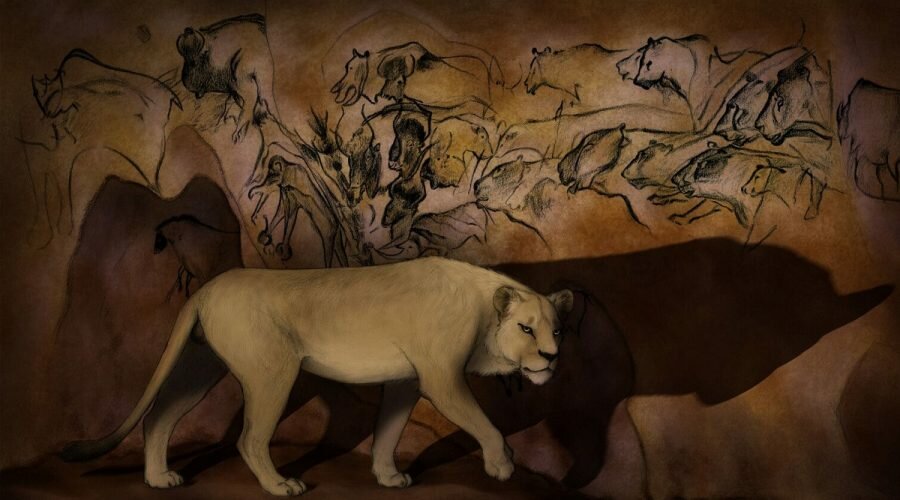The Bering Land Bridge connecting North America and Eurasia was periodically exposed and inundated by oscillating sea levels during the Pleistocene glacial cycles. This land connection allowed the intermittent dispersal of animals, including humans, between Western Beringia (far northeast Asia) and Eastern Beringia (northwest North America), changing the faunal community composition of both continents.
An international team of researchers led by the University of Adelaide, suggest a change in climate is the likely cause of the mysterious disappearance of ancient lions and bears from parts of North America for a thousand years or more prior to the last Ice Age.
In a study in Molecular Ecology, the researchers sequenced DNA from fossils of cave lions and bears from North America and Eurasia to better understand the timing and drivers of their past movement between continents.
“The shared patterns of dispersal between lions and bears correspond with the presence of the Bering Land Bridge that connected Siberia and Alaska during ice ages,” said Dr. Alexander Salis, a researcher with the Australian Centre for Ancient DNA at the University of Adelaide.
“The Bridge was periodically exposed and inundated by changing sea levels during the last few Ice Ages, allowing intermittent dispersal of animals and people between continents and changing the faunal composition.”
“While many might think that species arrive in a region and stay put, we show that the past was much more dynamic, involving multiple waves of dispersal and local extinctions in this case.”
“There’s a common perception that outside of mass extinctions or direct human interference, ecosystems tend to remain stable over thousands or even millions of years,” added Dr. Kieren Mitchell, also from the Australian Centre for Ancient DNA at the University of Adelaide.
“As illustrated by our study of the fossil record, that’s not necessarily the case.”
“Previous research has shown that brown bears disappeared from some parts of North America for thousands of years prior to the latest Ice Age.”
“They later reappeared, walking from Siberia to Alaska across the Bering Land Bridge — possibly at the same time as people moved across the Bridge into North America too.”
“But no-one knows exactly why they disappeared in the first place, which is why studying this event is important.”
A key finding of the new research is that cave lions from the same area became extinct more than once — before their final extinction they also disappeared and reappeared thousands of years later, around the same time as bears. There is no evidence that people caused these temporary disappearances, and cold Ice Age conditions were not to blame.
“Instead, it looks like a smoking gun pointing to some kind of change in their ecosystem,” Dr. Mitchell said.
The timing of lions and bear extinction from parts of North America (specifically Alaska and the Yukon Territory) coincides with evidence of widespread vegetation change in the region.
The researchers suggest that warm temperatures before the last Ice Age may have caused a change in the abundance of different kinds of plants, which had knock-on effects on herbivores and then their predators (like bears and lions).
Colder temperatures leading up to the last Ice Age might have reversed this change and made the area more hospitable for herbivores, and in turn their predators.
Sources:
https://onlinelibrary.wiley.com/doi/10.1111/mec.16267
Related Topic: 28,000-Year-Old Cave Lion Cub Found Perfectly Preserved in Siberian Permafrost

